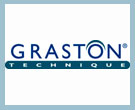When an inflamed or irritated tendon, the condition referred to as tendonitis, fails to heal, the tendon degenerates. This condition is called tendinosis. Tendons are the thick, fibrous cords that attach muscles to bone. They transmit the power generated by a muscle contraction to move a bone. Tendinosis usually affects only one part of the body at a time. Although tendinosis is common in middle or old age as the tendons becomes more susceptible to injury, younger people who exercise vigorously as well as people who perform repetitive tasks are also susceptible.
What are the Symptoms of Tendonosis?
Symptoms are very similar to tendonitis. The affected tendons are usually painful when moved or touched. Even a small movement of the joint near the tendon may cause severe pain. Stiffness and restricted movement in the affected area may also occur. The skin over the tendon may be warm and red, and sometimes a tender lump may appear. The tendon sheaths may be visibly swollen from the accumulation of fluid and inflammation, or they may remain dry and rub against the tendons, causing a grating sensation or a sound that can be heard with a stethoscope when the joint is moved.
Conventional medical treatments may help relieve the symptoms of tendinosis, but they do not address the root of the problem. By strengthening structural weaknesses in the body, as natural medicine treatments like Chiropractic and nutritional supplements do, pain associated with tendinosis may be alleviated permanently.
How does Tendonosis develop?
The most common cause of tendinosis is injury or overuse during work or play, particularly if the individual is poorly conditioned, has bad posture or uses the affected limb in an awkward position. If the injured tendon is not allowed to heal properly, degeneration of the tendon will occur. Occasionally an infection within the tendon sheath may be responsible for the initial inflammation. Joint diseases, such as rheumatoid arthritis, gout, scleroderma, Reiter’s Syndrome, thyroid diseases and diabetes, can also affect tendon sheaths.
Tendinosis is also closely linked to ligament laxity. When a tendon is injured or degenerated, the ligament no longer has dynamic support of the joint. Likewise, a weakened or lax ligament leads to an unstable joint, which means the tendon has no static support and would be stressed.
Natural vs. Modern Medicine’s Approach to Tendonosis
Modern Medicine’s Approach to Tendonosis
The typical treatment regime for tendinosis, the degeneration of a tendon after an injury that was not allowed to heal properly, is to stop whatever activity involves the affected joint and rest. Since this condition often afflicts athletes, this means no more training and no more playing the sport. This treatment is usually followed by exercise, as well as continued use of non-steroidal anti-inflammatory drugs (NSAIDs) and cortisone injections. The problem with this approach is that it does nothing to strengthen the weakened tendon and, thus, does not alleviate the chronic pain that people with this condition experience. While anti-inflammatory drugs and cortisone shots have been shown to produce short-term pain benefit, they result in long-term loss of function and even more chronic pain by actually inhibiting the healing process of soft tissues and accelerating cartilage degeneration. In addition, the long term use of these drugs can lead to other sources of chronic pain, allergies and leaky gut syndrome.
Other modern medical treatment options include cryotherapy and massage. But again, although they may provide pain relief, they do not address the root of the problem – weakened and/or injured tendons and ligaments. In addition, when all else fails, patients who experience tendinosis may be referred to a surgeon. Unfortunately, surgery often makes the problem worse. Surgeons will use x-ray technology as a diagnostic tool, which does not always properly diagnose the pain source. In addition, the decision to remove tissue often results in arthritis.
The Natural Medicine Approach to Tendonosis
A better approach is to treat the degenerated tendon with Chiropractic Care and nutritional supplementation. In addition, treating the ligaments in the affected joint with Chiropractic can also be very effective. This is because tendons and ligaments reciprocally affect one another, with the injury of a tendon causing ligament stress and laxity, and ligament laxity causing further tendon stress.
Chronic pain is most commonly due to tendon and ligament weakness or cartilage deterioration. The safest and most effective natural medicine treatment for repairing tendon, ligament and cartilage damage is Chiropractic. In simple terms, Chiropractic stimulates the body to repair painful areas.
If you are interested in more information about natural treatments or to schedule an appointment, please contact Dr. Laboret at 972-671-5263.
Disclaimer: The preceding is to provide information about relief and the benefits that may be derived. It is not intended to claim a cure for any disease or condition. It should not take the place of your doctor’s advice or treatment.






